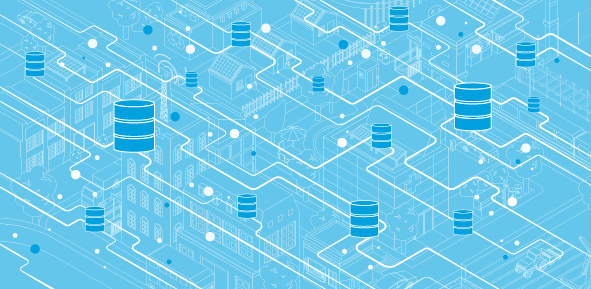
Our Challenge
When planning a complex project like a high speed rail network or a public housing development, computer models can balance the differing needs of local communities, small business owners, the natural environment and other stakeholders, giving human designers and engineers better insights about the possible outcomes of their decisions. A digital built Britain will enable humans, assisted by artificial intelligence (AI), to make smarter decisions about complex systems or circumstances. While this technology already exists across a range of sectors including automotive, finance and healthcare, the scale and complexity of decisions in the built environment – and the volume and variety of data – means more research and development is needed. CDBB envisioned a future where we leveraged data about assets and services for the public good, improving the performance, lifespan and sustainability of infrastructure to contribute to human flourishing.
Our Solution
CDBB collaborated with organisations such as the Alan Turing Institute, the Open Data Institute and industry leaders to research, develop and demonstrate the value of advancements in the fields of data science, artificial intelligence and machine learning.
Projects within this theme
| Project Title | Lead Researcher |
|---|---|
|
Open ML Training Data For Visual Tagging Of Construction-specific Objects (ConTag) Aiming to adopt ML technology for the digital construction sector, ConTag will provide visual and 3D training dataset and pre-trained deep neural networks (NN) to benchmark against. We expect this shared and open datasets to kick-start further ML developments in both academia and industry. |
Dr Jan Boehm |
|
Feasibility of an Operationg System for Interspatial Networking in a Built Environment Building a new operating system for situated environments that can handle the demands of thousands of sensors and actuators that need to run in a coordinated and highly reliable fashion. We designed a software architecture that securely connects physical spaces with extremely low latency, high bandwidth local-area computation capabilities and service discovery. |
Dr. Anil Madhavapeddy |
|
PolyChora Alpha: a new digital interface for interdisciplinary city design Developing a new digital interface to integrate the data and visualisation of the designs of land use, buildings, transport infrastructure and associated urban services at the neighbourhood and city scale. |
Dr Ying Jin |
|
Aerial swarm robotics for active inspection of bridges Creating a coordinated aerial swarm system using drones to inspect the cracks in bridge structures, improving the monitoring coverage and efficiency. |
Dr Shan Luo |
|
Machine Learning and AI in the Built Environment Improving the foundations for applying tried-and-tested machine learning (ML) approaches to the built environment by reducing the cost of creating and deploying ML systems. |
|
|
Adaptive Design of Supported Excavations This workshop highlighted the need to develop the technology to be more reliable, the skills to operate Observational Method tools, the standards to underpin these and a body of open-access case studies of good practice.
|
Dr Giovanna Biscontin |

